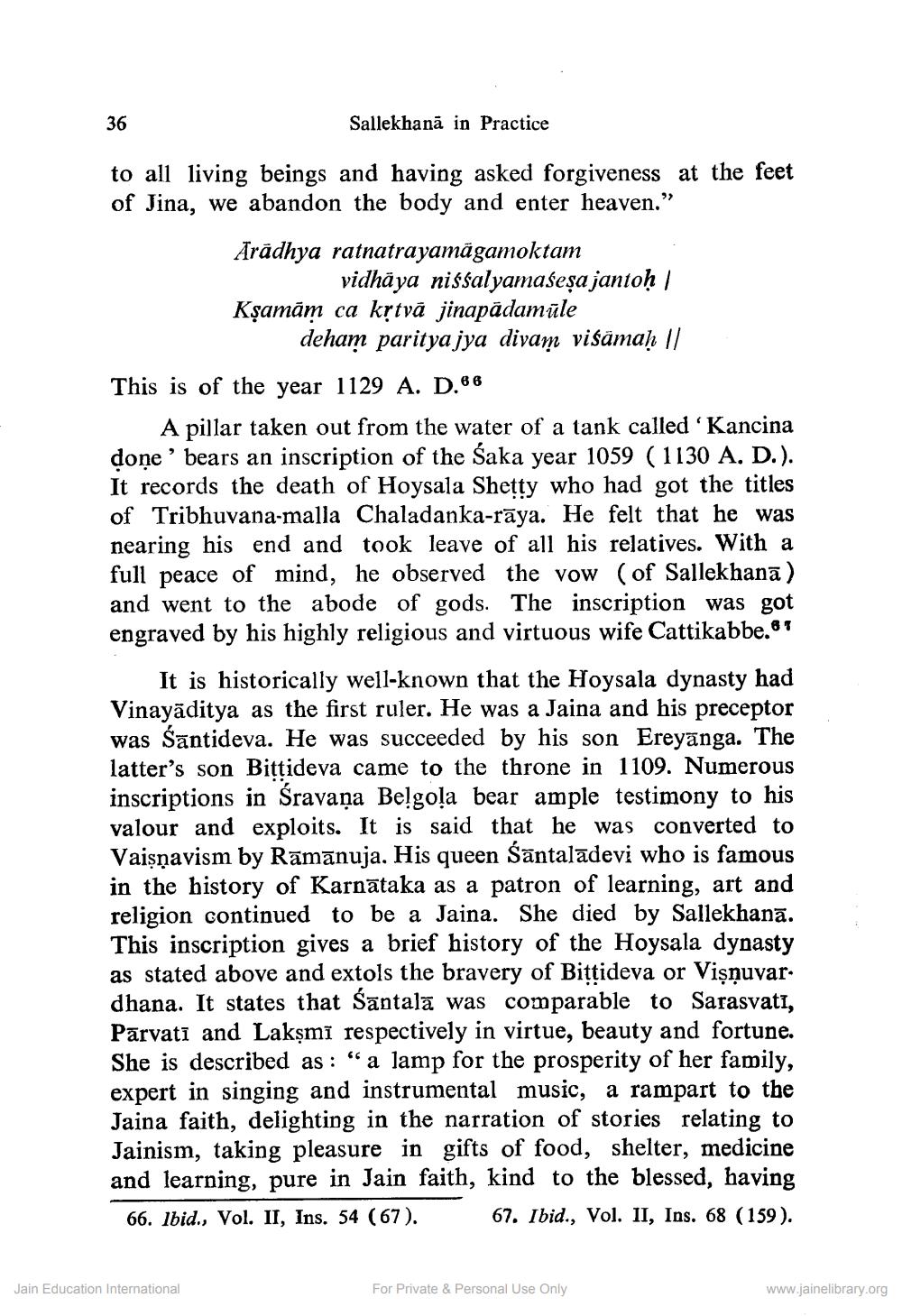________________
36
Sallekhanā in Practice
to all living beings and having asked forgiveness at the feet of Jina, we abandon the body and enter heaven."
Arādhya ratnatrayamāgamoktam
vidhäya nissalyamašeșa jantoh | Kșamām ca kṛtvā jinapādamūle
deham paritya jya divam visämah || This is of the year 1129 A. D.86
A pillar taken out from the water of a tank called 'Kancina doņe' bears an inscription of the Saka year 1059 ( 1130 A. D.). It records the death of Hoysala Shetty who had got the titles of Tribhuvana-malla Chaladanka-rāya. He felt that he was nearing his end and took leave of all his relatives. With a full peace of mind, he observed the vow of Sallekhana) and went to the abode of gods. The inscription was got engraved by his highly religious and virtuous wife Cattikabbe.?
It is historically well-known that the Hoysala dynasty had Vinayāditya as the first ruler. He was a Jaina and his preceptor was śāntideva. He was succeeded by his son Ereyānga. The latter's son Bittideva came to the throne in 1109. Numerous inscriptions in Śravana Belgola bear ample testimony to his valour and exploits. It is said that he was converted to Vaisnavism by Rāmānuja. His queen śāntaladevi who is famous in the history of Karnātaka as a patron of learning, art and religion continued to be a Jaina. She died by Sallekhanā. This inscription gives a brief history of the Hoysala dynasty as stated above and extols the bravery of Bittideva or Vişnuvar: dhana. It states that Sāntalā was comparable to Sarasvati, Pārvatī and Lakşmi respectively in virtue, beauty and fortune. She is described as : "a lamp for the prosperity of her family, expert in singing and instrumental music, a rampart to the Jaina faith, delighting in the narration of stories relating to Jainism, taking pleasure in gifts of food, shelter, medicine and learning, pure in Jain faith, kind to the blessed, having 66. Ibid., Vol. II, Ins. 54 (67). 67. Ibid., Vol. II, Ins. 68 (159).
Jain Education International
For Private & Personal Use Only
www.jainelibrary.org




